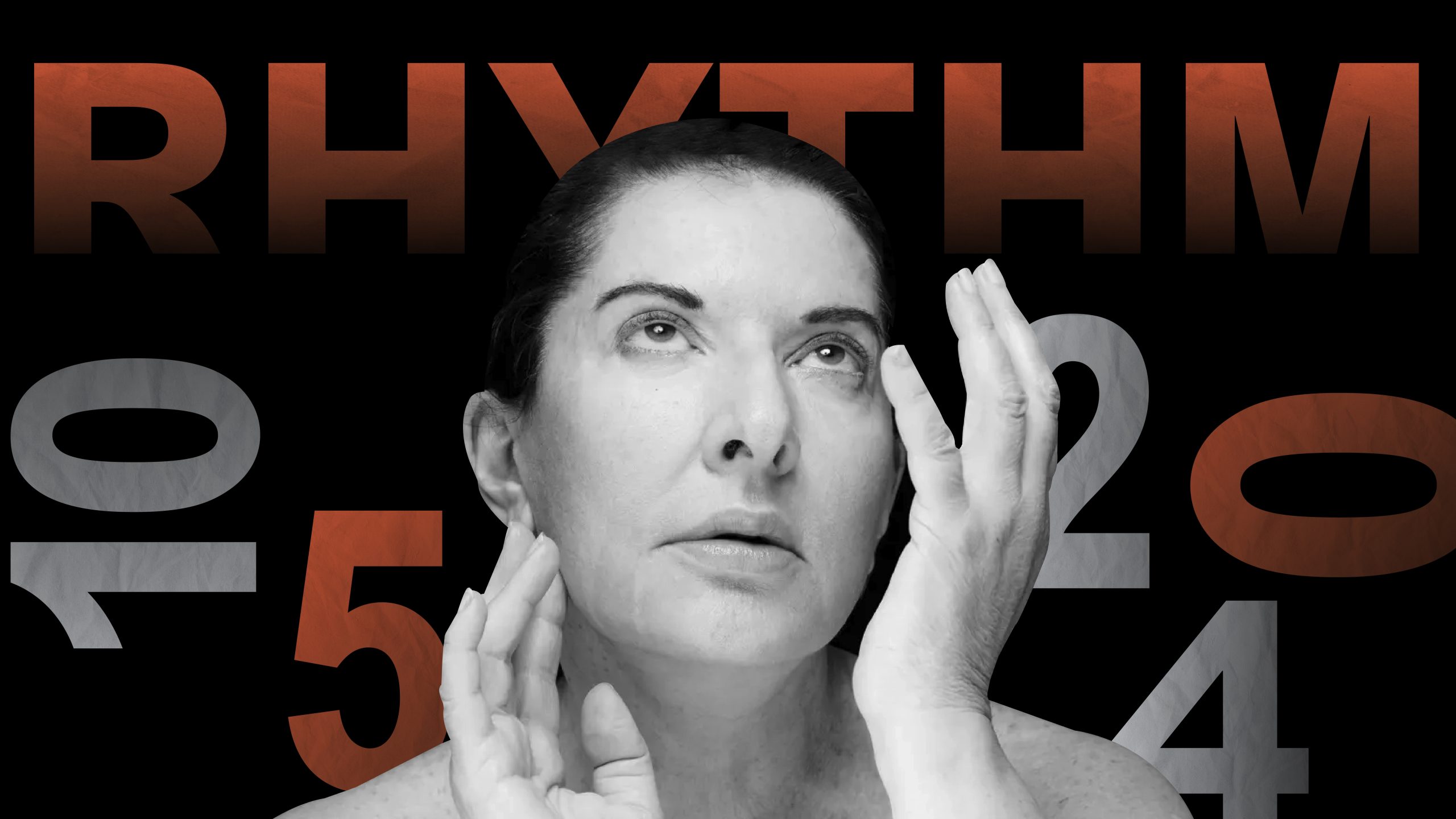As the dawn of 2024 breaks, it brings to a close Marina Abramović’s retrospective at The Royal Academy of Arts in London, a half-century culmination that epitomises a transformative era in Western performance art. Announced back in 2020, this collaboration heralded Abramović as the first female solo exhibitionist in the venerable 255-year history of the Academy. Originally envisaged as a retrospective, the exhibition, beleaguered by pandemic-induced postponements, evolved under Abramović’s visionary guidance into a dialogue between her artistic epochs, challenging the very notion of retrospection.
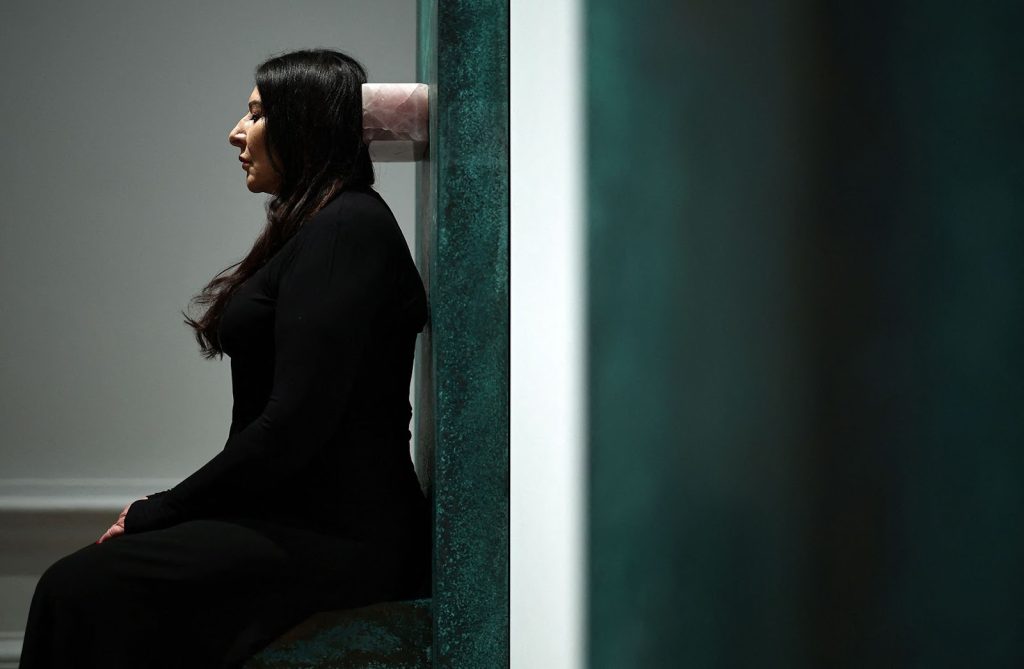
In the intervening years, a maelstrom of creativity and introspection swirled around Abramović. Boris Miljković’s 2020 film “Homecoming – Marina Abramovic and Her Children” offered a cinematic homage to her life’s journey, while “512 Hours With Marina Abramovic”, a meticulous documentation of her “512 Hours” exhibition, co-produced by Adina Istrate and Giannina La Salvia in 2021, graced the silver screen. Abramović’s artistry burgeoned unrestrained – her 2020 mixed reality art piece “The Life” at Christie’s, the poignant “Crystal Wall of Crying” in 2021 reflecting the Russo-Ukrainian War’s horrors, and her foray into the NFT realm with “The Hero” in 2022. These milestones marked her unyielding artistic pursuit, even in the aftermath of her soulmate Ulay’s passing.
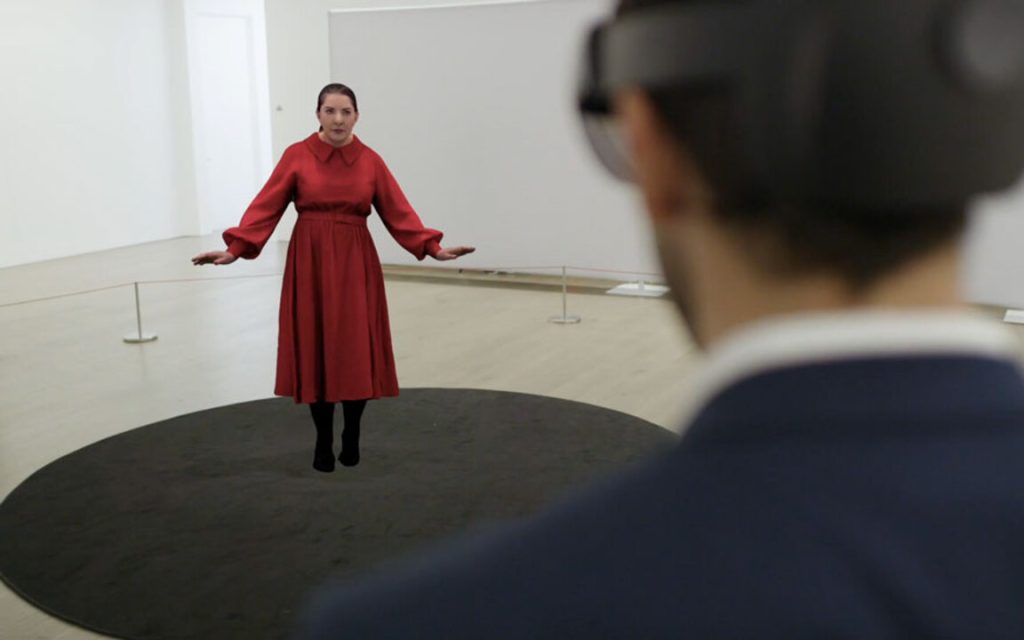
Abramović’s “Rhythm” series, a groundbreaking exploration from 1973-1974, saw her body become an audacious medium for art. This series wasn’t merely a test of endurance, it was an odyssey into the soul’s depths, a confluence of vulnerability and indomitable spirit. Each performance was a testament to her resolute exploration of human limits and the interplay of the artist’s presence with the audience’s perception.
You can overcome the fear of pain, the fear of dying, the fear of suffering.
Marina Abramović
Rhythm 10, 1973

In “Rhythm 10”, Abramović daringly reimagined the Slavic knife game, transforming it into a ritualistic dance of danger and precision.

Introducing an array of knives, each cut resonated with the rhythms of risk and resilience, capturing an intense symphony of human vulnerability.
Rhythm 5, 1973
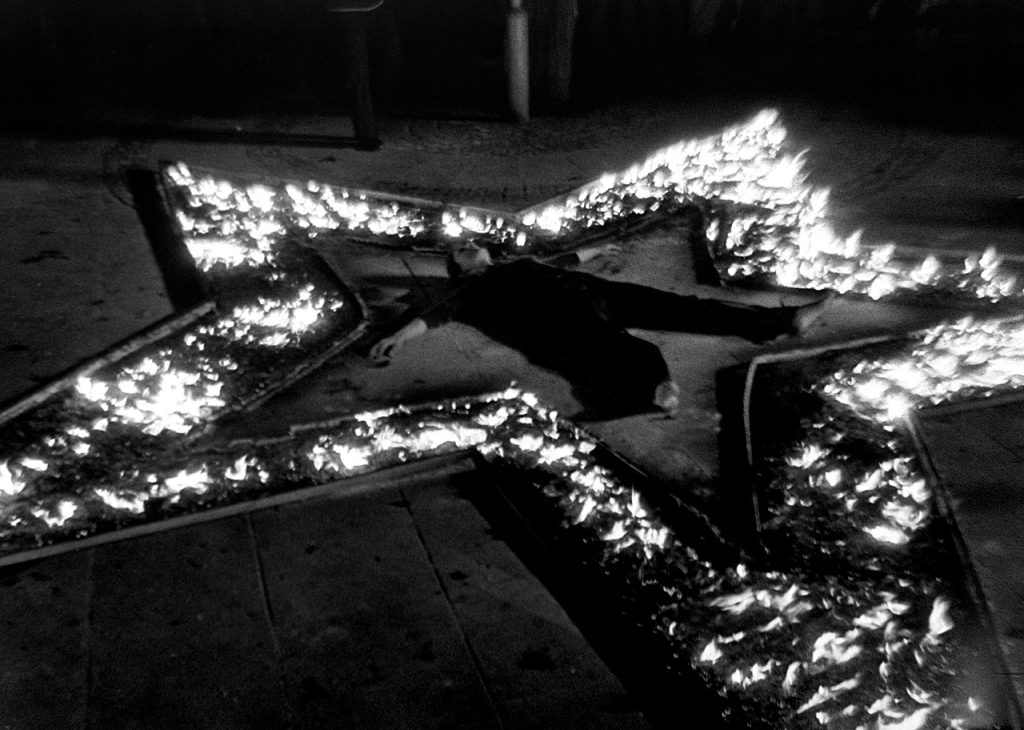
“Rhythm 5” embodied a stark symbol of defiance against oppressive collectivism, with Abramović crafting a five-pointed star and setting it ablaze. This performance, with its ritualistic shearing and offerings, culminated in an inadvertent descent into unconsciousness, a poignant commentary on the thin line between self-expression and self-endangerment.
Rhythm 2, 1974

In “Rhythm 2”, following the ephemeral lapse of consciousness in “Rhythm 5”, Abramović delved into the realms of control and surrender. This performance, a foray into the effects of psychotropic substances, was a bold exposition of the blurred boundaries between awareness and oblivion.
Rhythm 4, 1974

“Rhythm 4” presented a solitary Abramović in a metaphysical duel with an industrial fan, a raw confrontation with the elemental force of air. This performance, a juxtaposition of vulnerability and resilience, culminated in a transcendent loss of consciousness, blurring the realms of physical existence and ethereal absence.
Rhythm 0, 1974
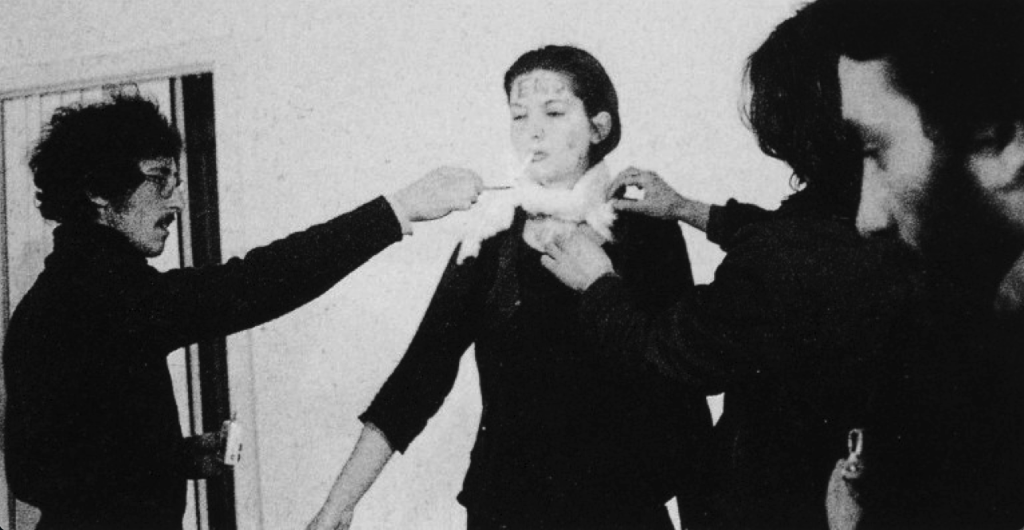
“Rhythm 0”, perhaps Abramović’s most provocative piece, dissolved the barriers between artist and audience, transforming the performer into a living canvas of human interaction. This performance escalated from contemplative to confrontational, culminating in a loaded gun scenario, a harrowing testament to the unpredictable dynamics of power and vulnerability.
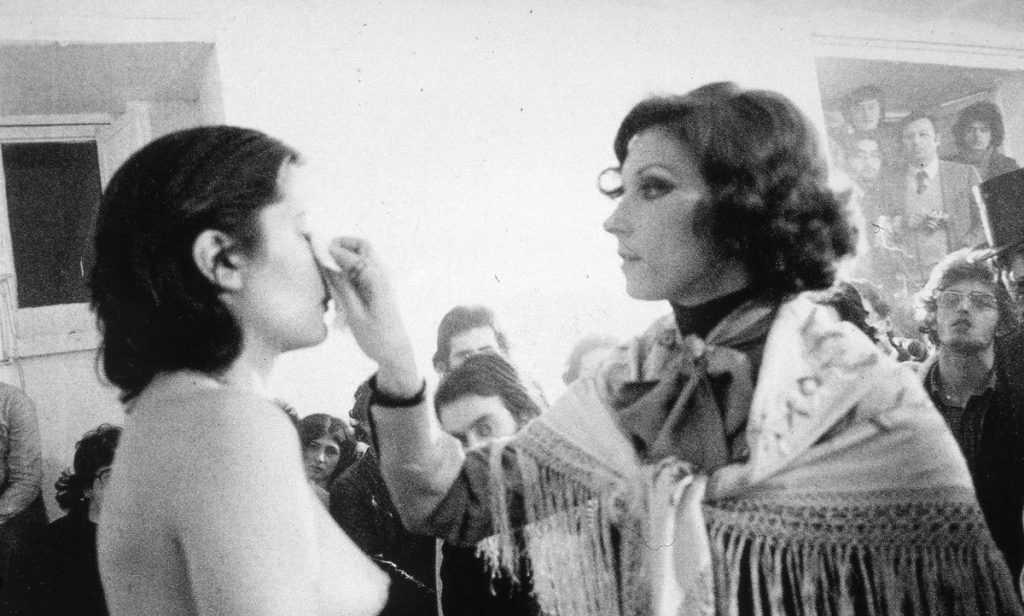
Now in her 77th year, Abramović’s reflections in a recent CNN interview encapsulate the essence of her artistic journey. Her work, a crucible of courage and confrontation, has consistently challenged societal norms and personal boundaries. Her body, a canvas of expression, traverses the realms of pain and transcendence, continually redefining the landscape of performance art. Abramović’s legacy, woven from controversy and acclaim, remains a touchstone in the artistic exploration of the human condition, her indelible mark on the art world as profound and revolutionary as ever.
Photo source: Pinterest, Guggenheim Museum, Talk Easy with Sam Fragoso, The John Doppler Effect, Short History

